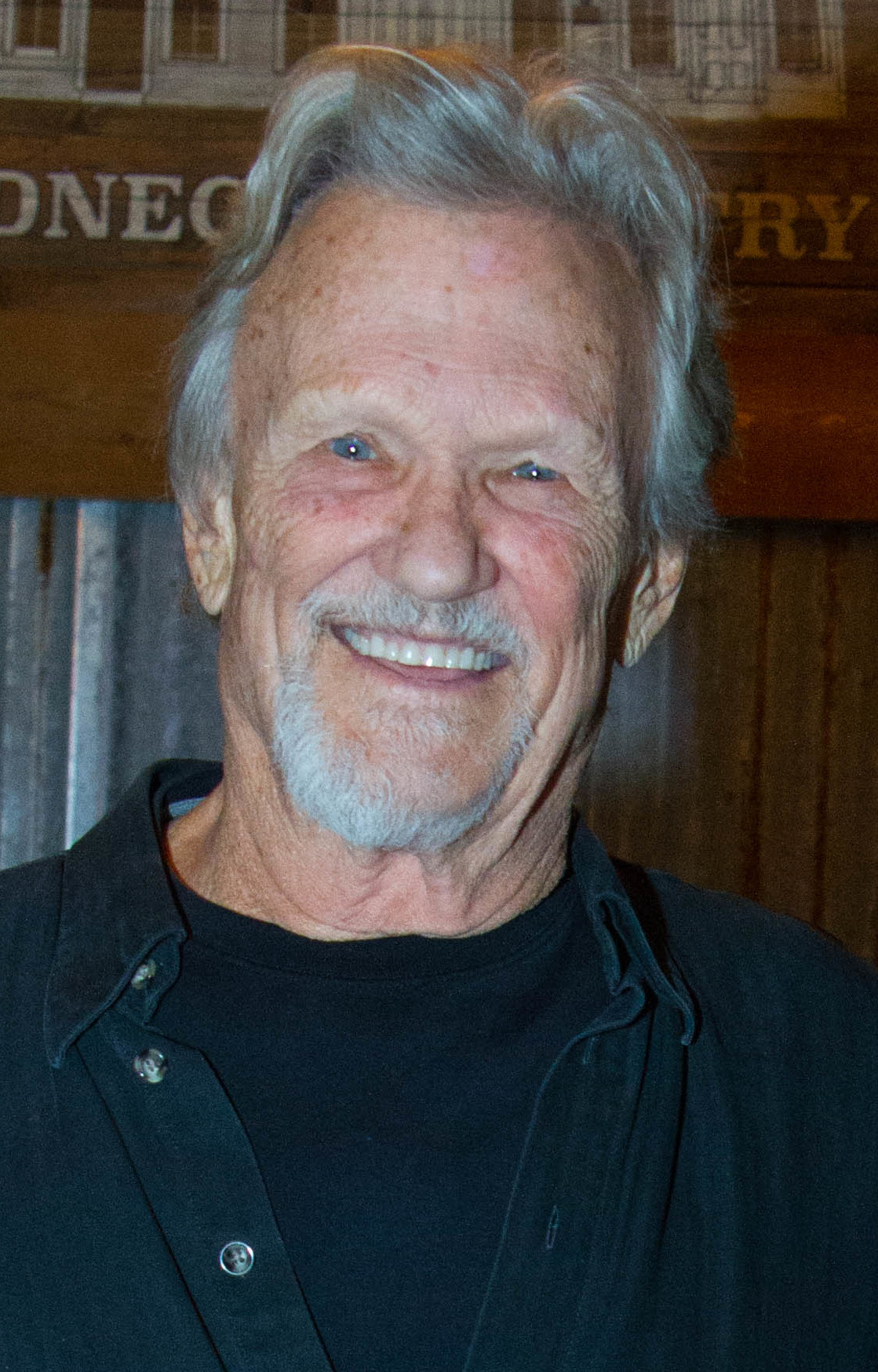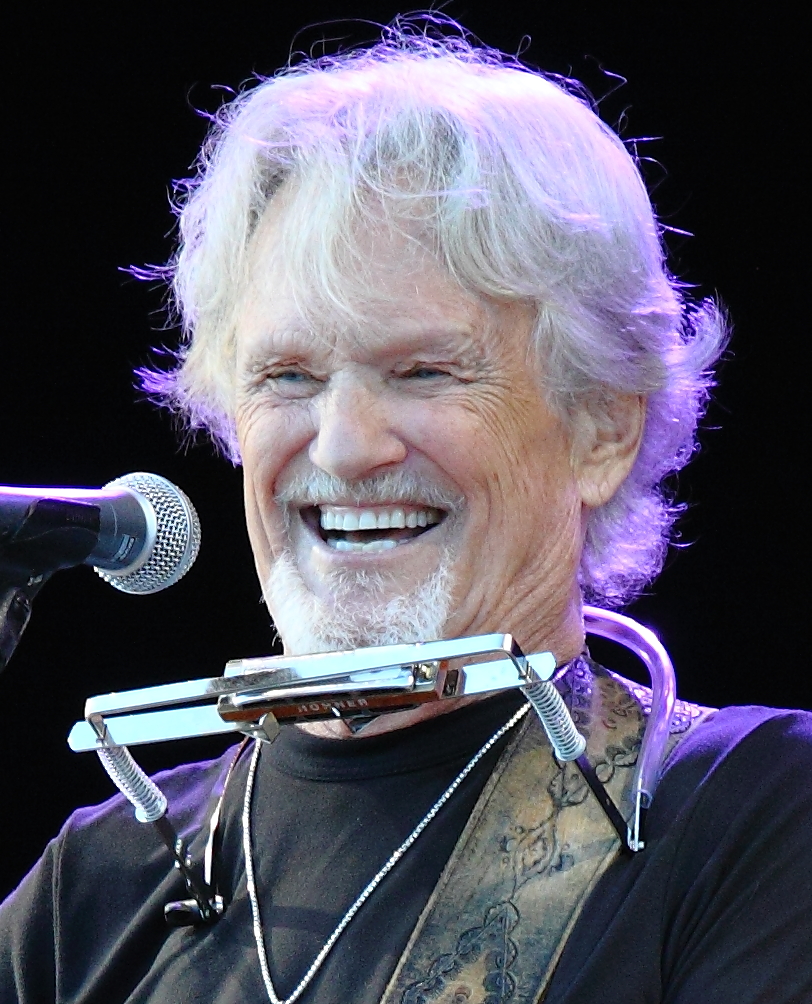
The passing of Kris Kristofferson at 88 marks the end of an extraordinary life that seamlessly navigated the worlds of music, film, and academia, leaving an indelible imprint on each. A Rhodes scholar turned country music icon and A-list Hollywood actor, Kristofferson’s journey was characterized by a distinctive blend of intellectual rigor, rugged charisma, and a profound artistic sensibility. His family confirmed his peaceful passing at home on Maui, Hawaii, on Saturday, September 28, without disclosing a cause, inviting reflection on a career that defied easy categorization and enriched American culture across multiple decades.
Kristofferson’s multifaceted career commenced not with a guitar in hand or a script, but in the rigorous halls of academia and military service, a foundation that profoundly informed his later artistic endeavors. His transition from a promising military career to the nascent, often tumultuous, Nashville songwriting scene underscores a singular dedication to his craft, a choice that initially alienated his family but ultimately paved the way for a revolutionary impact on country music. His compositions, characterized by intricate folk lyrics and themes of loneliness, tender romance, freedom, and commitment, brought an unprecedented depth and candor to the genre.
This in-depth article aims to explore the pivotal chapters of Kris Kristofferson’s life, from his remarkable academic achievements and unexpected pivot to songwriting, through his seminal contributions to music, marked by iconic collaborations and a unique lyrical style. We will delve into the initial health struggles that shadowed his later years, setting the stage for a comprehensive understanding of the man who became a superstar across diverse creative landscapes.
1. **The Announcement of His Passing at 88**Kris Kristofferson, the musician and acclaimed “A Star is Born” actor, died on Saturday, September 28, at his home on Maui, Hawaii, at the age of 88. The news was shared by his family, who released a statement through spokesperson Ebie McFarland, confirming his peaceful passing. The announcement, while somber, underscored the profound impact he had on those closest to him and the vast audience he touched globally.
In the official statement provided to NBC News, McFarland conveyed the family’s sentiments: “It is with a heavy heart that we share the news our husband/father/grandfather, Kris Kristofferson, passed away peacefully on Saturday, September 28 at home.” The statement reflected gratitude for his life and the love he received, adding, “We’re all so blessed for our time with him. Thank you for loving him all these many years, and when you see a rainbow, know he’s smiling down at us all.” No specific cause of death was provided by the family, in line with their expressed desire for privacy regarding his final moments.
The reporting from The Associated Press similarly noted his passing at 88, describing him as “a Rhodes scholar with a deft writing style and rough charisma who became a country music superstar and an A-list Hollywood actor.” This concise yet comprehensive description immediately encapsulates the broad scope of Kristofferson’s influence and the diverse facets of his public persona, from the intellectual to the rugged performer. His death marks a significant moment for the entertainment industry, prompting reflections on a career that spanned more than five decades and redefined the contours of several artistic forms.
Read more about: Charlie Kirk’s Legacy: An In-Depth Look at the Life, Impact, and Tragic Assassination of a Right-Wing Force
2. **Early Life and Academic Excellence**Born Kristoffer Kristofferson on June 22, 1936, in Brownsville, Texas, Kris Kristofferson’s early life was marked by exceptional intellectual and athletic prowess, setting him on a path seemingly destined for a career far removed from the glare of spotlights. The eldest of three children to Mary Ann (Ashbrook) and Lars Henry Kristofferson, his father, an Air Force major general, naturally steered him toward a military trajectory. This upbringing instilled a sense of discipline and ambition that would manifest throughout his life, even as he ultimately chose a different course.
His formative years saw him excel across multiple demanding fields. After his family relocated west, he graduated from San Mateo High School in Northern California in 1954, where his distinction in both academics and athletics was clearly evident. This early demonstration of diverse talents foreshadowed a life of varied achievements. His athletic achievements were particularly notable, being featured as a promising boxer in Sports Illustrated’s “Faces in the Crowd” series in 1958, highlighting his physical capabilities alongside his intellectual gifts.
Kristofferson continued to distinguish himself academically, graduating with honors and a degree in literature from Pomona College in Claremont, California, in 1958. His literary talents were further recognized with prizewinning entries in a collegiate short-story contest sponsored by The Atlantic Monthly magazine. This academic foundation culminated in his prestigious selection as a Rhodes scholar, enabling him to study English literature at Merton College at the University of Oxford in England, from which he graduated in 1960. These early accomplishments painted the picture of an individual poised for a life of intellectual pursuit or distinguished military service.
Read more about: Unlocking the Secrets of Nine: 12 Mind-Blowing Facts You Won’t Believe About This Magical Number!

3. **Military Service and Pivotal Career Turn**Following his graduation from Oxford in 1960, Kris Kristofferson received a commission as a second lieutenant in the U.S. Army, embarking on a military career that was largely expected of him, given his background as the son of an Air Force General. He was stationed in Germany in 1961, where he served as a helicopter pilot, honing skills that would, in a memorable — albeit exaggerated — anecdote, later intersect with his nascent music career. His dedication and competence led to rapid advancement within the ranks.
By 1965, Kristofferson had attained the rank of captain, a testament to his service and leadership abilities. His military trajectory appeared firmly set when he was offered a prestigious appointment to teach English at the U.S. Military Academy at West Point, New York. This offer represented the pinnacle of a conventional, respectable career path, aligning perfectly with his family’s expectations and his distinguished academic record. However, it was at this juncture that Kristofferson made a choice that would irrevocably alter his life’s course and, consequently, the landscape of American music and film.
He ultimately declined the West Point position, making the audacious decision to trade the comforts and certainty of a military career for the challenging and often uncertain life of a would-be songwriter in Nashville. This pivotal career turn was met with significant resistance and even scandal within his family. As he recounted to The New York Times Magazine in 1970, “When I made the break I didn’t realize how much I was shocking the folks, because I always thought they knew I was going to be a writer.” His parents, bewildered by his rejection of all he had worked for, disowned him for a period, finding his choice incomprehensible. This move underscored Kristofferson’s unwavering commitment to his artistic calling, even at great personal cost, marking the true beginning of his unconventional journey.
Read more about: Beyond the Limelight: 15 Celebrities Who Bravely Served in the Vietnam War

4. **Arrival in Nashville and Early Struggles**Kristofferson’s arrival in Nashville in the mid-1960s was not met with immediate success or recognition, despite his formidable intellectual background and unique perspective. The burgeoning music scene, while vibrant, required a specific craft and sensibility that he initially had to learn and adapt to. His early attempts at songwriting, influenced by his poetic and English teaching background, were deemed “too long and too perfect” by figures like Marijohn Wilkin, the first publisher to sign him to a songwriting deal. He needed to “learn the way people talk,” as Wilkin observed in a 2003 interview with Nashville Scene, indicating a necessary shift from academic formalism to colloquial expression.
During these lean years, Kristofferson undertook a variety of jobs to sustain himself while pursuing his songwriting ambitions. In 1966, he worked as a part-time janitor at Columbia Records’ Music Row studio, a rather humbling occupation for a Rhodes scholar and former Army captain. It was during this period that Bob Dylan recorded tracks for his seminal “Blonde on Blonde” double album, with Kristofferson famously recalling emptying ashtrays and wastepaper baskets during those sessions. This proximity to musical greatness, while serving in an ancillary role, offered a unique vantage point into the creative process of his peers.
His journey in Nashville was characterized by a period of intense self-improvement and collaboration. “I had to get better,” Kristofferson once told Nashville Scene, reflecting on these early struggles. He dedicated “every second” he could to “hanging out and writing and bouncing off the heads of other writers,” a testament to his relentless pursuit of mastery in his new chosen field. This period of immersion allowed him to shed the academic constraints and cultivate the “keen melodic sensibility” and “languid expressiveness” that would come to define his unique blend of vernacular and sophisticated idioms, ultimately distinguishing him from the Hank Williams-derived shuffles prevalent at the time.
Read more about: DOROTHY’s Unyielding Spirit: Charting the American Rock Band’s Journey, Evolution, and Enduring Impact on Modern Music

5. **Breakthrough as a Songwriter**Kris Kristofferson’s persistent efforts in Nashville eventually bore fruit, leading to a remarkable breakthrough as a songwriter that would cement his legacy in American music. His transition from struggling hopeful to celebrated lyricist was spearheaded by the success of several compositions that not only topped charts but also resonated deeply with audiences and fellow artists alike. These songs established him as a master of candid and profound storytelling, infusing country music with a new level of emotional complexity.
One of his earliest and most significant successes came with “For the Good Times,” a bittersweet ballad that became a No. 1 country hit for Ray Price in 1970 and also reached the Top 40 on the pop chart. This composition demonstrated Kristofferson’s ability to craft narratives of tender romance and longing that transcended genre boundaries. Later that same year, his “Sunday Morning Coming Down” became a No. 1 country hit for his friend and mentor, Johnny Cash, whose powerful rendition memorably intoned the song’s indelible opening couplet: “Well, I woke up Sunday morning / With no way to hold my head that didn’t hurt / And the beer I had for breakfast wasn’t bad / So I had one more for dessert.” The song articulated a profound sense of spiritual abandonment and desolation, moving beyond a simple hangover narrative to touch on deeper existential themes.
Further solidifying his reputation, “Help Me Make It Through the Night” became another monumental success. Released in 1971, Sammi Smith’s “heart-stopping performance” propelled it to a No. 1 country and Top 10 pop hit, earning Kristofferson a Grammy Award for Country Song of the Year in 1972. Perhaps his most iconic composition, “Me and Bobby McGee,” initially penned with a female secretary, Bobby McKee, in mind and inspired by Federico Fellini’s film “La Strada,” gained immortality through Janis Joplin’s posthumous No. 1 single in 1971. Joplin, who had a close relationship with Kristofferson, famously changed the gender of “Bobby McGee,” creating a raw and plaintive recording just days before her death, which captured the song’s themes of freedom and the bittersweet realities of life on the road.
Read more about: Angelina Jolie: Tracing a Global Icon’s Evolution from Cinematic Stardom to Profound Humanitarian Engagement

6. **Iconic Collaborations and Mentorship**Kris Kristofferson’s trajectory in the music industry was significantly shaped by a series of pivotal relationships and collaborations, most notably with Johnny Cash and Janis Joplin, who recognized and championed his unique talent. These connections were not merely professional but often deeply personal, forming the bedrock of his early success and enduring influence. Cash, in particular, played a crucial mentorship role, offering support and a platform that proved indispensable for the aspiring songwriter.
Kristofferson often acknowledged Cash’s profound impact, stating in a 2006 Associated Press interview, “Shaking his hand when I was still in the Army backstage at the Grand Ole Opry was the moment I’d decided I’d come back.” He added, “It was electric. He kind of took me under my wing before he cut any of my songs. He cut my first record that was record of the year. He put me on stage the first time.” This testament highlights Cash’s early belief in Kristofferson, which extended to recording his songs and offering him crucial stage exposure. One of the most legendary stories involves Kristofferson allegedly landing a helicopter on Cash’s lawn to deliver a demo, a story Cash loved to tell, though Kristofferson later clarified its exaggerated nature: while he did land a helicopter at Cash’s house, Cash wasn’t home, and no one ever cut the specific demo he delivered.
Another watershed moment in Kristofferson’s performing career came in 1969 when Johnny Cash and his wife, June Carter Cash, invited him to appear with them at the Newport Folk Festival in Rhode Island. This opportunity was critical at a time when he was still a “scuffling songwriter.” Despite being “immobilized by stage fright” that night, it was June Carter Cash who “all but dragged him onstage with them,” as her husband recalled. The performance proved “propitious,” earning him a “highly favorable mention in The New York Times the next day” and exposing him to a national audience. Kristofferson himself reflected on its significance, stating, “If there was one thing that got my performing career started, that was it right there.” This exposure, coupled with Janis Joplin’s poignant recording of “Me and Bobby McGee,” underscored the profound impact of these relationships on his rise to prominence.
Read more about: JD Souther: Remembering the Master Songwriter Who Shaped ’70s Country-Rock and Beyond
7. **Distinctive Songwriting Style and Themes**Kris Kristofferson’s songwriting redefined the parameters of country music, infusing the genre with a rare blend of literary sophistication and raw, plain-spoken candor. His compositions explored a complex tapestry of human experience, moving beyond conventional country narratives to delve into themes that resonated with the counterculture sensibilities of his era, yet remained timeless in their emotional depth. This distinctive style, which owed as much to John Keats as to the Beat Generation and Bob Dylan, marked him as a truly original voice.
His work often explored the inherent tension between “freedom and commitment, alienation and desire, darkness and light.” A prime example of this philosophical approach is encapsulated in the iconic line from “Me and Bobby McGee”: “Freedom’s just another word for nothin’ left to lose/Nothin’ ain’t worth nothin’ but it’s free.” This lyrical dexterity allowed him to articulate profound existential insights in a seemingly simple, yet deeply impactful manner, making his songs resonate with a wide and diverse audience. He wove “intricate folk music lyrics about loneliness and tender romance into popular country music,” creating a bridge between traditional country storytelling and more introspective, folk-influenced narratives.
Kristofferson’s embrace of a “neo-Romantic sensibility” and his willingness to tackle “rarely heard candor and depth” set him apart from many of his contemporaries. His connection to a “gifted circle of like-minded — and similarly bacchanalian — tunesmiths” in Nashville, including Roger Miller and Willie Nelson, fostered an environment of intense creativity. He described this period as “kind of our Paris in the ’20s,” a time “real creative and real exciting — and intense,” believing their “work was important” and “would mean something in the big picture.” This conviction in the artistic merit of their craft, combined with his unique blend of intellectual and vernacular idioms, forged a songwriting style that continues to be celebrated for its honesty, complexity, and profound insight into the human condition.
Read more about: JD Souther: Remembering the Master Songwriter Who Shaped ’70s Country-Rock and Beyond

8. **Emergence as an Actor and Early Film Roles**Kristofferson’s transition from acclaimed songwriter to a compelling screen presence was as unconventional as his earlier career pivot. His rugged good looks and natural charisma quickly caught the attention of Hollywood, leading to his debut in Dennis Hopper’s 1971 film, “The Last Movie.” This marked the beginning of a remarkable second act, one that would see him establish himself as a serious and respected actor, despite his initial lack of formal training in the craft.
His entry into acting unfolded quite serendipitously. As Kristofferson recounted in a 2006 Associated Press interview, his first professional performing gig in Los Angeles, opening for Linda Ronstadt at the Troubadour, proved to be a critical turning point. A highly favorable review from Los Angeles Times music critic Robert Hilburn extended the concert for a week, drawing the attention of numerous film industry professionals.
“There were a bunch of movie people coming in there, and I started getting film offers with no experience,” Kristofferson explained. This unexpected influx of opportunities underscores his inherent appeal and the immediate recognition of his onscreen magnetism, propelling him into a new creative realm without the conventional pathways typically required of aspiring actors.
Read more about: 11 Unspoken Truths: Actresses Navigating the Complexities of Hollywood and Beyond

9. **Acclaimed Hollywood Career and Notable Performances**Over four decades, Kristofferson carved out an impressive acting career, starring in more than 50 movies and demonstrating a versatile range that belied his unorthadox entry into the field. He developed a particular fondness for Westerns, where his gravelly voice and stoic demeanor allowed him to portray ruggedly handsome leading men with memorable authenticity.
He delivered acclaimed performances in films such as Martin Scorsese’s 1974 drama “Alice Doesn’t Live Here Anymore,” where he played the laconic male lead opposite Ellen Burstyn. This role showcased his ability to bring depth to complex characters, earning critical recognition for his nuanced portrayal. Another significant role came in Sam Peckinpah’s gritty 1973 Western, “Pat Garrett & Billy the Kid,” where Kristofferson embodied the young title outlaw, Billy the Kid, a performance that further solidified his place in the genre.
Perhaps his most iconic film role was opposite Barbra Streisand in Frank Pierson’s 1976 remake of “A Star Is Born.” In this acclaimed performance as a tragic rock star in a rocky relationship, Kristofferson earned a Golden Globe Award, an achievement that underscored his dramatic capabilities. His portrayal was so impactful that it was later echoed by Bradley Cooper in the 2018 remake, demonstrating the enduring resonance of his original performance. He also reunited with Peckinpah for the 1978 film “Convoy,” playing a truck driver, and later appeared as a corrupt sheriff in John Sayles’s Oscar-nominated 1996 neo-Western, “Lone Star.” Even in a rare foray into the superhero genre, Kristofferson left his mark, playing the mentor of Wesley Snipes’ vampire hunter in Marvel’s “Blade” in 1998, further cementing his diverse cinematic legacy. Despite being part of one of Hollywood’s biggest financial flops, the 1980 Western “Heaven’s Gate,” his overall filmography remained distinguished, leading to his induction into the Texas Film Hall of Fame in 2006 alongside other notable talents.
Read more about: Angelina Jolie: Tracing a Global Icon’s Evolution from Cinematic Stardom to Profound Humanitarian Engagement

10. **Musical Collaborations with Rita Coolidge and The Highwaymen**Kristofferson’s artistic journey was also enriched by significant collaborations beyond his individual songwriting and acting pursuits. In 1973, he married fellow songwriter Rita Coolidge, and together they embarked on a successful duet career that showcased their harmonious blend of voices and shared musical sensibilities. Their partnership yielded two Grammy Awards for best country vocal performance by a duo or group, first for “From the Bottle to the Bottom” in 1973 and again for “Lover Please” in 1975, cementing their place as a formidable musical pair. They also appeared in movies together before their divorce in 1980.
Another pivotal point in his performing career was the formation of The Highwaymen in the mid-1980s, an outlaw-country supergroup comprising Kristofferson, Willie Nelson, Johnny Cash, and Waylon Jennings. This collaboration brought together four titans of country music, creating a unique synergy that resonated deeply with fans. Kristofferson often reflected on the profound impact of this alliance, expressing a profound respect and admiration for his fellow members.
He once told the Associated Press in 2005, “I think I was different from the other guys in that I came in it as a fan of all of them.” He considered them “major heroes of mine” and described working alongside them as “a little unreal. It was like seeing your face on Mount Rushmore.” The group released just three albums between 1985 and 1995, producing the No. 1 country single “The Highwayman” in 1985. Kristofferson, in 2005, expressed regret that he hadn’t fully appreciated the brevity of their time together, wishing he had “cherished each moment.” Tragically, Jennings died in 2002 and Cash a year later, leaving only Nelson and Kristofferson from the original quartet, a testament to the passage of an iconic era.
Read more about: From Rhodes Scholar to Rebel Star: Tracing Kris Kristofferson’s Unconventional Path to Hollywood Stardom
11. **Confronting Health Challenges: Misdiagnosis and Lyme Disease**In his later years, Kris Kristofferson faced significant health challenges, a period marked by debilitating memory loss that deeply impacted his quality of life. In his 70s, he began experiencing symptoms that doctors initially attributed to either Alzheimer’s or dementia, leading to a misdiagnosis that shadowed several years of his life. The possibility that contact sports played in his teenage years might have increased his risk of certain cognitive diseases was also considered, adding to the complexity of his condition.
During this difficult time, Kristofferson struggled profoundly, often unable to recall his activities from one moment to the next. The profound impact of this memory loss even inspired him to write a poignant song about his experience, with lyrics like, “I see an empty chair/ Someone was sitting there,” and “I’ve got a feeling it was me/ And I see a glass of wine/ I’m pretty sure it’s mine.” This creative output, born from his personal battle, offered a glimpse into his inner world and the confusion he endured.
However, a crucial turning point arrived in 2016 when he tested positive for Lyme disease, a diagnosis that finally provided clarity. His wife, Lisa Meyers, believed he had been bitten by a tick while filming “Disappearances” in 2006. She revealed that the medications he had been taking for Alzheimer’s and depression were likely exacerbating his symptoms. Upon discontinuing these medications and completing three weeks of treatment for Lyme disease, his condition dramatically improved. Meyers was astonished by the change, exclaiming, “All of a sudden he was back,” noting that while there were still difficult days, “some days he’s perfectly normal and it’s easy to forget that he is even battling anything.”
Meyers further elaborated on his long history of symptoms, suggesting he may have been infected with Lyme anywhere from 14 to 30 years prior. She cited a diagnosis of fibromyalgia 12 years before, which, in retrospect, should have prompted a Lyme test, along with chronic muscle spasms that had plagued him for decades. These spasms were so severe that they left him unable to work for eight months, manifesting as “golf ball-sized, painful contractions” that required extensive treatment including acupuncture, heat, massage, and eventually a spinal cortisone shot. Other seemingly unrelated health issues, such as painful knees requiring annual shots and a pacemaker for arrhythmias, were also identified as potentially being linked to Lyme disease. Furthermore, after filming “Disappearances,” he was diagnosed with moderate to severe sleep apnea, though he resisted using a CPAP machine. These health challenges were in addition to a coronary artery bypass surgery he underwent in 1999, highlighting a complex medical history that he faced with a characteristically stoic outlook, as evidenced by his calm acceptance when wheeled into the operating room: “So what if it is?” he reportedly responded to his wife’s worried remark about saying goodbye.

12. **Political Convictions and Artistic Integrity**Kris Kristofferson was never one to shy away from expressing his deeply held political convictions, even when doing so came at a cost to his commercial popularity. His sharp-tongued political lyrics, particularly in the late 1980s, often alienated a segment of his fanbase who preferred their music without overt political commentary. This steadfast commitment to artistic integrity, even in the face of public disapproval, was a hallmark of his career.
His 1989 album, “Third World Warrior,” stands as a testament to this courage. The album explicitly focused on Central America and critically examined the repercussions of United States policy in the region. However, this direct engagement with political issues proved unpopular, with both critics and fans expressing a lack of enthusiasm for the overtly political songs, which subsequently hurt his album sales and broader appeal. Kristofferson remained undeterred by the backlash.
He recalled an incident during a 1995 interview with the Associated Press where a woman complained about one of his songs, which included lyrics about killing babies in the name of freedom. His response, delivered with characteristic frankness, challenged her discomfort: “And I said, ‘Well, what made you mad — the fact that I was saying it or the fact that we’re doing it? To me, they were getting mad at me ’cause I was telling them what was going on.” This exchange perfectly encapsulated his belief in music as a medium for truth-telling, regardless of how uncomfortable that truth might be.
His political stance was perhaps inevitably shaped by his military background. As the son of an Air Force General, he enlisted in the Army in the 1960s, fulfilling an expectation deeply ingrained in his family and generation. “From my background and the generation I came up in, honor and serving your country were just taken for granted,” he explained in a 2006 AP interview. This foundational experience later made the process of questioning the actions taken “in your name” particularly painful, fueling his outspoken critique of governmental policies and his unwavering commitment to humanitarian concerns in his art.
Read more about: The Common Sense Guide to Building a Versatile Career: Lessons from a Hip-Hop Icon
13. **Retirement from Performing and Enduring Influence**After decades of an unparalleled career traversing music and film, Kris Kristofferson made the decision to retire from performing and recording. This significant step, taken in 2020, was officially announced in 2021, marking a new chapter for the artist. His longtime manager, Tamara Saviano, articulated the nature of this retirement, emphasizing that it was a natural progression rather than an abrupt cessation.
Saviano explained the timing, stating, “Kris is aging; Kris is 84. It didn’t feel like such big news to us. That’s why there was no announcement: It was just sort of a slow changing of the guard thing.” This perspective underscored that the retirement was a gentle easing out of public performance, reflecting Kristofferson’s age and the natural evolution of his life. While he would no longer be on the road, Saviano assured fans that “Kris’ music isn’t going anywhere,” with promises of new projects derived from archival materials or tribute works, ensuring his artistic presence would continue to resonate.
Notably, Saviano explicitly denied that Kristofferson’s health was the primary reason for his retirement, asserting at the time that “Kris’ body of work will live on — and hopefully he’ll live on for a lot longer. He’s really healthy and in good shape.” This statement, while perhaps aimed at reassuring fans, stood alongside the widely known details of his health struggles in previous years, illustrating the complex narrative surrounding a beloved public figure’s later life. Even in retirement, Kristofferson made occasional guest appearances, including a memorable performance with Rosanne Cash at Willie Nelson’s 90th birthday celebration at the Hollywood Bowl in Los Angeles in 2023, where they sang “Loving Her Was Easier (Than Anything I’ll Ever Do Again),” a testament to his enduring love for music and his colleagues.
Read more about: Beyond the Limelight: 15 Celebrities Who Bravely Served in the Vietnam War

14. **A Lasting Legacy Across Diverse Fields**The narrative of Kris Kristofferson is one of an extraordinary life lived with unyielding conviction and profound artistic daring. From his beginnings as a Rhodes scholar and U.S. Army captain, to his revolutionary impact on country music, and his unexpected yet acclaimed career as an A-list Hollywood actor, Kristofferson defied easy categorization at every turn. His passing at 88 invites a comprehensive reflection on a legacy that is as diverse as it is deep, a testament to a man who truly forged his own path.
His songwriting alone secured his place in American culture, infusing country music with a literary grace and an honesty that was both intimate and universal. Compositions like “Me and Bobby McGee” and “Sunday Morning Coming Down” transcended genre, becoming timeless anthems that explored the human condition with unparalleled candor and emotional depth. He painted vivid pictures of freedom and commitment, alienation and desire, leaving an indelible mark on generations of artists and listeners alike.
Simultaneously, his commanding presence on screen brought a rugged authenticity to a wide array of characters, from tragic rock stars to iconic Western outlaws. He possessed an undeniable magnetism that made him a cinematic force, earning critical acclaim and a Golden Globe, proving that true talent transcends conventional pathways. His gravelly voice and stoic charm became synonymous with a brand of leading man that was both intellectual and untamed.
Read more about: Kathryn: A Name Forged in Purity, Echoing Through Illustrious Careers and Enduring Legacies
In both his music and his acting, Kristofferson embodied a unique blend of intellectual rigor, rugged charisma, and a profound artistic sensibility. He was a genuine original, a true ‘Highwayman’ who navigated the complex terrains of art, life, and personal conviction with an unwavering spirit. His journey stands as an inspiring reminder that true artistry knows no boundaries, leaving behind a rich tapestry of work that will continue to resonate for years to come, securing his place as an enduring legend across the diverse fields he so masterfully conquered.








